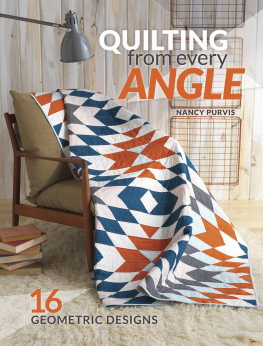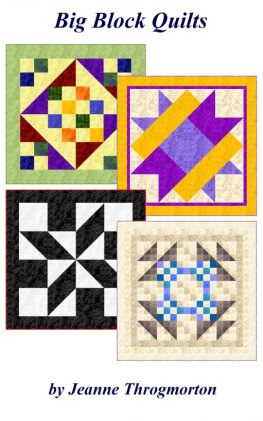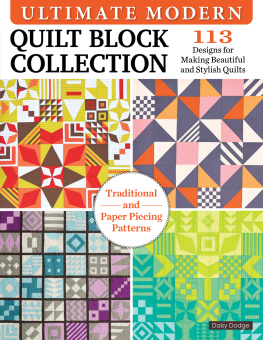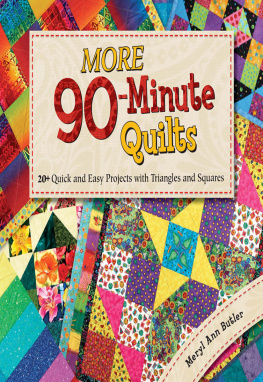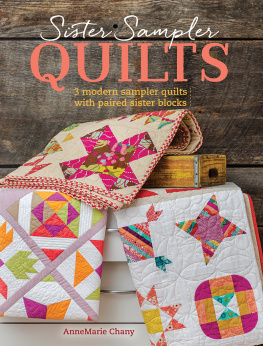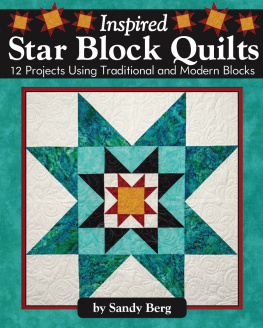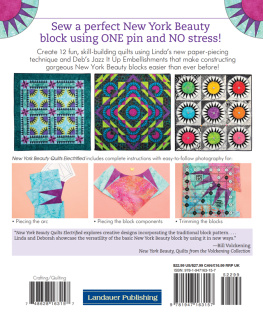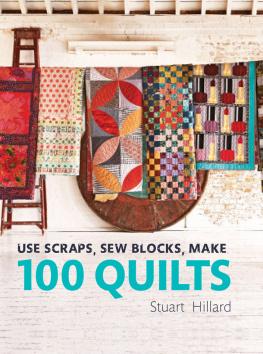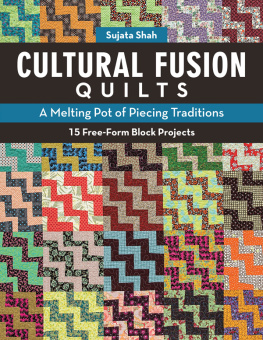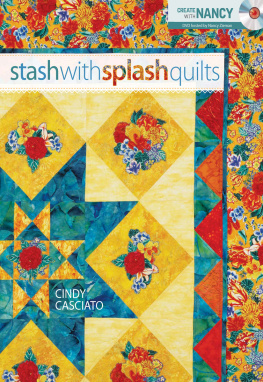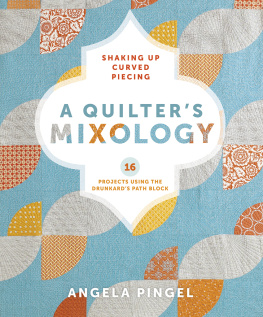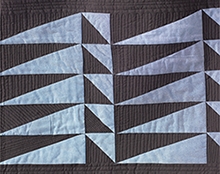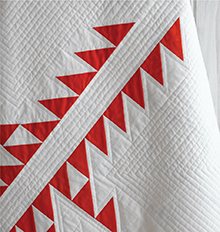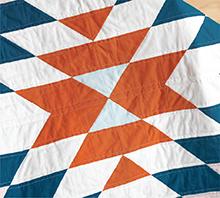Contents
Guide
16 Geometric Designs
Nancy Purvis

Dedication
To my familythe best cheerleaders
CONTENTS
Introduction
After my mother passed away, my father gave me her sewing machine. It sat in my closet for many years until, when my son was born in 2010, I finally pulled out that old Necchi and taught myself how to use it. I started my blog, owensolivia.blogspot.com, to share my work.
In 2012, my blogging friend Danny Heyen (mommyforreals.blogspot.com) introduced me to modern quilting. It was something I had never heard of before. When I saw some of the great pieces she was making, I knew I wanted to give quilting a try. I began collecting fabrics and became especially interested in modern graphic prints. I came to love modern quilting for its use of bold solid colors and prints, for its minimal look with lots of negative space, and for the geometric nature of many of its designs.
Angles can be dramatic, as in this mix of different high-contrast triangles in the .
Im especially attracted to the idea of using geometric shapes such as squares, rectangles, and triangles in new ways. I find it so interesting that simple lines, intersecting at various angles, can form such versatile geometries. Of course, these shapes and angles have been used in basic quilt blocks for many years. Yet people are still finding new ways to use them.
One of my favorite shapes is the half-square triangle (HST). Their simple diagonal lines make HSTs very versatile design elements. They are easy to work with, too, making them a great choice for stitchers of all skill levels.
Setting bright half-square triangles in a pattern surrounded by negative space gives the a distinctly modern look.
Half-square triangles create drama when used in fresh new ways ().
Over the years, I have come to enjoy the creative processes of both designing and making quilts. I have discovered that what I really like most is the ability to see a design I have imagined come to fruition as a tangible, usable product that can bring joy and comfort to a persons life. If you have ever slept under a handsewn quilt, curled up under one with a good book, or tucked your child to sleep under one, you know the joy and comfort Im describing.
I freely admit that Im not a quilting expert; I just want to design and make quilts because I love to create, and I hope that is the case for you, too. I taught myself in a way that works best for me, and I hope that you can take these designs and work them in a way that best suits you.
This book features sixteen quilt patterns in easy to advanced skill levels, making it a perfect companion for a growing quilter. It also offers plenty for experienced quilters who want to expand their pattern library, because these designs can be reinterpreted in the makers own way. I encourage you to let your style and personality shine through in your own versions of these quilts.
Sprinkled throughout the book in sections called My Method, youll find the basic techniques I used for making these projects. Because most of the quilts feature designs with angled shapes, I have focused on the methods I use to achieve sharp, accurate piecing: half-square and half-rectangle triangles, paper piecing, and Y seams. You may very likely have your own preferred methods or techniques, but here I share the ones that have worked for me.
I hope you will find inspiration in this book, and that these quilts will bring joy to you and to someone you love.
Note
Hashtags are a great way to connect to other quilters through social media. Under the quilt name at the beginning of each project in this book, look for its hashtag. Then, when you make and post photos of your projects online, hashtag them to share! You can also search these hashtags before you start your project for loads of design inspiration. Also, search for the general hashtag for this book, #quiltingfromeveryangle.
Inspired Quilting
I encourage you to put your own individual style and personality into making the quilts presented here. For example, feel free to choose your own colors and mix up the placement of colors within the quilts. Perhaps making these quilts might even inspire you to create your own quilt designs. In this chapter, I share some of the process that led me to design the quilts in this book.
Developing an Eye for Design
If you want to expand your horizonseven just for making one quiltlearning to see things in a new light will help you achieve your goal. If youre interested in making a unique quilt that expresses who you are, cultivate your ability to spot interesting patterns and color combinations in your everyday life. Eventually, youll find yourself becoming adept at using them to develop unique designs.
I gather visual inspiration from all sorts of places, and I can promise you that if you look up from this book right now, you more than likely have a few new design options staring you right in the face. The setting youre inwhether its an art gallery, a park, or even an officedoesnt matter. Inspiration is all around you.
Patterns in Everyday Life
This earth and the people on it are amazing. The things that people produce through imaginative thought and problem solving blow my mind! Learning to recognize design in everyday life is not necessarily difficult, but it requires following a new train of thought when youre out and about. You have to teach yourself what to look for.
Heres an experiment: Go for a walk in a public place like a shopping center or a downtown street, and take along a small sketchbook, a pencil, and a camera. (I use my phones camera.) Look for designs and patterns. Personally, I am attracted to things that people create, like buildings and other structures, because they feature interesting combinations of rectangles, squares, triangles, and other geometric and angled shapes.
I focus on things like architectural details, windows, railings, iron gates, flooring such as tile, window displays, and even graffiti. Look at everything, from bridges and electrical wires to cracks in the sidewalk. Notice more intangible things, such as shadows, or the intersection of two objects. And of course, study anything in nature, which, after all, displays living design.

